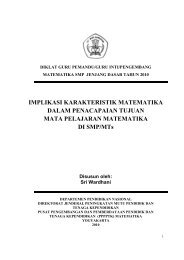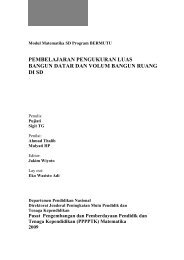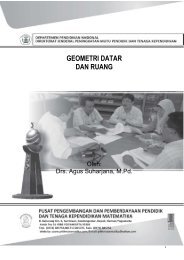25 Biggest Mistakes Teachers Make and How to Avoid Them
25 Biggest Mistakes Teachers Make and How to Avoid Them
25 Biggest Mistakes Teachers Make and How to Avoid Them
Create successful ePaper yourself
Turn your PDF publications into a flip-book with our unique Google optimized e-Paper software.
Mistake 6: Physiological Discrimination<br />
are escorted <strong>to</strong> their bus <strong>and</strong> are<br />
accounted for. They are aware of the<br />
fears <strong>and</strong> anxieties a child experiences<br />
SCENARIO 6.3<br />
Blurred-Eye View<br />
when they are lost or alone in a situation<br />
<strong>and</strong> they would not subject their<br />
children <strong>to</strong> such an experience.<br />
My worst experience in school was not being able <strong>to</strong> see the chalkboard because I<br />
needed glasses. I was called on <strong>to</strong> read <strong>and</strong> explain a lesson we previously did, but I<br />
couldn’t see. Everything was a blur. The teacher got upset with me <strong>and</strong> embarrassed me<br />
in front of the class. She said that I needed <strong>to</strong> s<strong>to</strong>p squinting my eyes <strong>and</strong> making faces<br />
at her <strong>and</strong> just read <strong>and</strong> get involved with the rest of the class. I was trying. She sent a<br />
note home, telling my mother that maybe I needed my eyes checked. Well, I got cat eyeglasses<br />
<strong>and</strong> hated <strong>to</strong> wear them, but I did. Mrs. J. had everybody turn <strong>to</strong> look at me.<br />
Students with visual impairment<br />
exhibit obvious signs<br />
such as squinting, holding their<br />
book far away from or close <strong>to</strong> their<br />
face, <strong>and</strong> leaning forward trying<br />
<strong>to</strong> see the board. These students<br />
may complain of headaches, of<br />
blurred vision, or of irritated eyes.<br />
Some students may s<strong>to</strong>p paying<br />
attention <strong>to</strong> assignments that are<br />
difficult <strong>to</strong> see. Students with this<br />
type of physical challenge need help,<br />
not shame.<br />
SCENARIO 6.4<br />
Discrimination by Isolated Exits<br />
Well-trained educa<strong>to</strong>rs “red flag”<br />
behaviors such as squinting <strong>and</strong> neck<br />
craning. They moni<strong>to</strong>r the student’s<br />
behavior <strong>to</strong> confirm that the student is<br />
having a visual problem. If their suspicions<br />
are confirmed, caring teachers<br />
tactfully ask the student if he or she<br />
is experiencing difficulty seeing the<br />
board or assignments. Once teachers<br />
have established that there is indeed<br />
a visual problem, the next step is <strong>to</strong><br />
notify parents <strong>and</strong>/or appropriate<br />
school professionals (DeMott, 1982).<br />
My worst experience was in high school when the school wanted me <strong>to</strong> leave class<br />
later than everyone else because they said it was dangerous <strong>to</strong> have a wheelchair in the<br />
halls with all the students. I had a real problem with this because I wanted <strong>to</strong> see my<br />
friends <strong>and</strong> be a part of the crowd. To me, they really made me feel different than<br />
everyone else. This is something I’ve always tried not <strong>to</strong> do.<br />
This student’s predicament<br />
is at the core of the hotly<br />
debated issue of inclusion. The<br />
movement <strong>to</strong>ward full inclusion<br />
involves the education of all students<br />
in the regular classroom<br />
regardless of the severity of their<br />
h<strong>and</strong>icaps or disabilities.<br />
49





